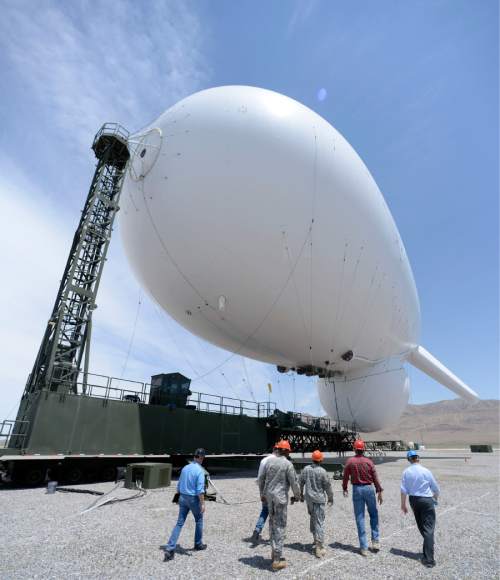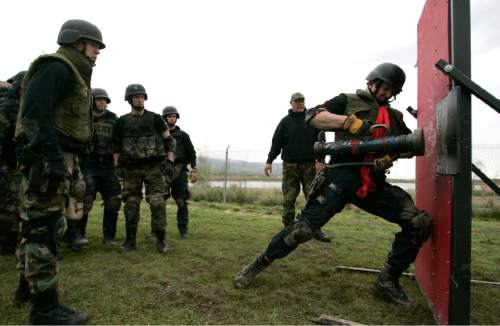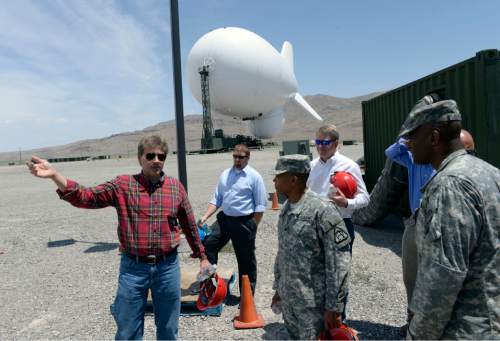This is an archived article that was published on sltrib.com in 2015, and information in the article may be outdated. It is provided only for personal research purposes and may not be reprinted.
A Senate committee Friday endorsed expanding the Utah Test and Training Range to help protect Hill Air Force Base. But critics say the military has not made clear what it will do with the extra land — and worry it may be used for dangerous testing.
The Senate Economic Development Committee voted 4-0 to send SCR7 to the full Senate. It would endorse a draft deal proposed in Congress to expand the UTTR by 625,643 acres, all now managed by the U.S. Bureau of Land Management.
The deal includes swapping out about 68,000 acres of Utah scattered school trust lands in that area for federal lands elsewhere — which officials say would help raise more money for schools through mining royalties.
"This is to give a buffer so the existing test range can't be encroached upon," said Sen. Curt Bramble, R-Provo, sponsor of the resolution. "There isn't going to be ordnance dropped on this property."
Without expansion, he said Hill could see its training missions transferred abroad — which could put the base at risk, along with the more than 25,000 jobs it provides.
But Steve Erickson, a longtime military watchdog testifying for some environmental groups, said no one is proposing to encroach on the remote desert lands, and questions if shenanigans may be afoot — especially because no final deal and maps have been put in writing.
He said part of the proposed expansion appears to include the "Southern Triangle" area adjacent to the Army's Dugway Proving Ground, an area where some chemical tests occurred in the past and the Army has sought to expand. Erickson said the Army is using areas nearby for open-air chemical and radiological tests, and the parcel may be sought as a buffer for that activity.
He also expressed concern about inclusion of northeast Snake Valley. "The Air Force at one time proposed in 1988 through 1991 an 'electronic battlefield' that would have flown over people there in Snake Valley. We fear that this is a potential use."
Erickson said he would like to see environmental studies conducted for the expansion that would require the military to detail its plans. Bramble called that an attempt to "obfuscate and delay."
"The idea that you would have to go through years of environmental impact [studies] on property that's not going to change use and is not going to have ordnance dropped on it doesn't make a lot of sense, unless you happen to be part of an environmental group that says, 'Look, we don't like the military,' " he said.
The resolution would support the exchange as long as several conditions are met.
Those include continuing current grazing permits in the area; allowing continued public access, except for some temporary closures by the military; assuring there would be no ordnance detonation there; and preserving existing water rights.







